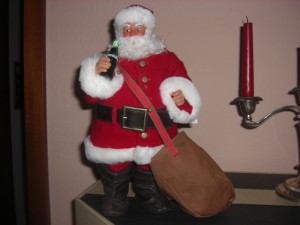The Weihnachtsmann has an unusual roll to play in German Christmas celebrations. In some parts of Germany, mainly in the North, he is said to bring the presents to the children on Christmas Eve. In much of Germany and especially in the South this is the job of the Christkind.
The confusion seems to have come about because of the different way that the protestant and catholic religions celebrated Christmas in the past.
The Weihnachtsmann is generally portrayed in a way that Father Christmas or Santa Claus is in other countries with a red and white gown and riding behind reindeer. Except that children do not leave out stockings for their presents – they do that with their boots for Nikolaus.
And whilst most films and even locally made television programmes will talk about the Weihnachtsmann, children are more usually asked “what did the Christkind bring you for Christmas”.
With the North/South divide making it easily possible for families to mix both traditions, adding a foreign element when other nationalities are involved just adds to the chaos!
To hear a simple explanation and a short discussion in German, listen to the podcast:
(Press the “play” button to listen to the podcast)





